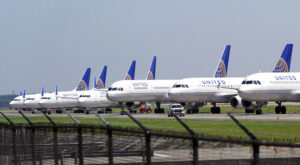
Despite widespread inflation affecting most sectors of the economy, airfare is witnessing a notable decrease, with prices down 6 percent year-over-year as of January 2024, and even a 15 percent reduction compared to a decade ago. This trend, highlighted by the U.S. Bureau of Labor Statistics, is expected to continue, with forecasts suggesting further declines in airfare prices, especially to international destinations. The American Express Global Business Travel Air Monitor 2024 report predicts drops up to 12 percent on certain international routes.
The anticipated price reductions across various regions include significant decreases such as an 11.9 percent drop from South America to North America and a 7.5 percent decrease from North America to Asia. These adjustments are attributed to a combination of factors reshaping the airline industry’s pricing strategies.
One of the primary drivers behind the falling airfares is the expansion of flight offerings and routes by airlines. The year 2023 saw a surge in travel interest, with the U.S. State Department issuing a record 24 million passport books and cards. Airlines responded by adding more flights, particularly international routes, to accommodate the growing demand. For example, Delta Air Lines announced its largest-ever transatlantic schedule for summer 2024, signaling increased capacity and potentially lower prices.
Moreover, the entry and expansion of budget airlines have significantly contributed to the competitive pricing landscape. New low-cost carriers, such as Norse Atlantic Airways, have introduced affordable routes between the U.S. and Europe, pressuring industry-wide airfare reductions. These airlines offer not just competitive prices but also new destinations, enhancing the appeal of international travel.
The adjustment in airfares also reflects a return to normalcy post-COVID-19 pandemic, with airlines recalibrating their schedules and pricing to pre-pandemic levels. The pandemic’s impact had led to reduced schedules and increased fares during the “revenge travel” period of 2022, but the current trend indicates a stabilization as the industry adjusts to renewed travel demand and operational capacities.
Despite the promising outlook for lower airfares, experts advise against waiting too long to book flights, especially for international travel. Prices are more likely to increase as the departure date approaches, with the optimal booking window being two to eight months in advance. This strategy ensures travelers can take advantage of current price reductions while avoiding potential last-minute surges.
In summary, the current decline in airfare prices is driven by increased flight offerings, the influence of budget airlines, and the airline industry’s adjustment to post-pandemic travel dynamics. As the landscape continues to evolve, travelers have more opportunities to explore international destinations at more affordable rates, marking an encouraging trend for the global travel industry.





















Comments are closed for this article!